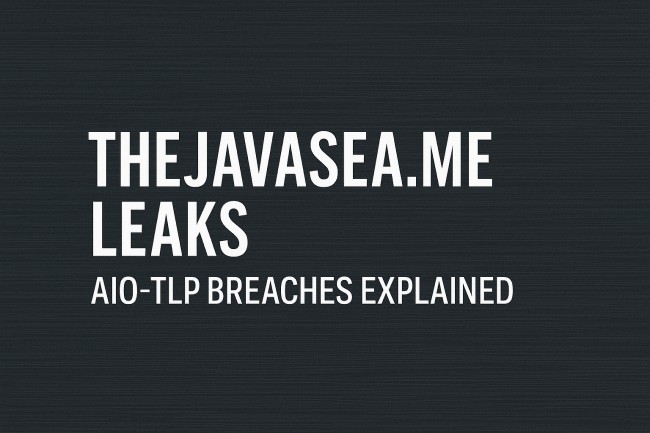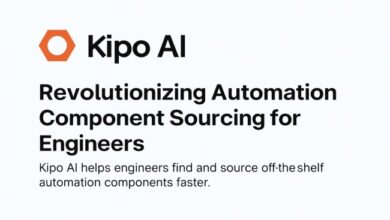Thejawasea.me Leaks: A Deep Dive Into the AIO-TLP Breaches and Their Impact.

In today’s digital age, data breaches are an ever-present threat that can jeopardize both personal privacy and corporate security. Among the most alarming recent incidents are the leaks associated with thejavasea.me, a notorious platform involved in distributing highly sensitive and diverse data collections categorized under the All-In-One Traffic Light Protocol (AIO-TLP). This article examines the javasea.me leaks, with a focus on the key leak packages: aio-tlp, aio-tlp287, aio-tlp370, aio-tlp371, and aio-tlp398. We will unpack their contents, the risks they pose, and the steps individuals and organizations should take to protect themselves.
Understanding thejavasea.me Leaks and the AIO-TLP Classification.
What is thejavasea.me?
thejavasea.me is a controversial online platform that has gained infamy for hosting and distributing leaked datasets. These leaks often involve massive troves of information, ranging from personal identifiable information (PII) to confidential corporate documents and hacking tools. The site categorizes its data dumps using the All-In-One Traffic Light Protocol (AIO-TLP) system, a classification framework that signals the sensitivity of the information.
What Does AIO-TLP Mean?
The Traffic Light Protocol (TLP) is a recognized standard in cybersecurity that labels information by its sensitivity and intended sharing boundaries, using four colors: White, Green, Amber, and Red. The “All-In-One” (AIO) tag typically refers to collections of data that encompass multiple types of sensitive content.
- White: Publicly shareable data.
- Green: Data for limited sharing within communities.
- Amber: Sensitive information restricted to internal groups.
- Red: Highly confidential data with serious potential consequences if leaked.
The leaks from thejavasea.me mostly fall under Amber or Red, indicating that the data can have significant privacy, financial, and security implications.
Detailed Overview of Major thejavasea.me Leaks
Thejavasea.me Leaks AIO-TLP287.
One of the most infamous leaks, aio-tlp287, is a vast dataset that includes a mixture of:
- Password lists: Collections of usernames and passwords—some hashed, some in plain text—from multiple breaches.
- Software cracks: Tools and scripts that enable bypassing software licenses.
- Corporate and government documents: Including sensitive communications and proprietary information.
- Automation scripts: Used for hacking or data scraping purposes.
This leak has been a wake-up call for many, showing how easily personal and corporate data can be exposed. Accessing or distributing this data is illegal and raises significant ethical concerns, as it violates privacy rights and intellectual property laws.
Thejavasea.me Leaks AIO-TLP370.
Released on 22 March 2025, aio-tlp370 is another significant leak, primarily consisting of:
- Over 1.2GB of source code and logs.
- Hardcoded API keys and credentials embedded in software.
- Cloud configuration files, if exploited, can lead to unauthorized access.
- More than 2,000 secrets were exposed within 24 hours of discovery.
The implications of this leak are vast for enterprises, as hackers could leverage these credentials to penetrate cloud services, leading to data theft or system disruptions.
Thejavasea.me Leaks AIO-TLP371.
Unlike the more technical leaks, aio-tlp371 surfaced on 7 November 2024, with a focus on personal content such as:
- Private videos and images.
- Metadata including timestamps and geolocation data.
This leak has sparked ethical and legal debates, underscoring the risks associated with unauthorized sharing of personal information. Victims of such leaks often suffer from severe privacy violations and emotional distress.
Thejavasea.me Leaks AIO-TLP398.
The most recent leak, aio-tlp398, made headlines on 7 May 2025. It continues the trend of distributing unauthorized personal content, but also includes:
- Bulk content packs are frequently updated.
- Collections of “solo” and “lovely” content, with ongoing additions.
This raises ongoing concerns about privacy, consent, and the responsibility of platforms in preventing the illegal distribution of data.
The Impact of thejavasea.me Leaks
Privacy Violations and Identity Theft
Personal information leaked through these datasets, such as email addresses, phone numbers, passwords, and financial details, increases the risk of identity theft. Cybercriminals can exploit this data for fraudulent activities, including phishing scams, credit card fraud, and unauthorized access to accounts.
Corporate and Economic Risks
Leaked corporate data, including internal communications and intellectual property, can result in:
- Loss of competitive advantage.
- Financial penalties due to regulatory non-compliance.
- Damage to the company’s reputation and customer trust.
Enterprises targeted by these leaks face increased operational costs in damage control and security remediation.
Cybersecurity Threats
With exposed credentials and software exploits, attackers gain valuable tools for launching sophisticated cyberattacks, including ransomware, data theft, and system hijacking. The cloud misconfigurations revealed in some leaks can provide gateways to corporate networks.
How to Protect Yourself From thejavasea.me Leaks.
Change Passwords Regularly and Use Strong Combinations
Avoid reusing passwords across different sites and use complex passwords that include a mix of letters, numbers, and symbols. Consider using a reputable password manager.
Enable Two-Factor Authentication (2FA)
Adding a second verification step significantly reduces the chance of unauthorized account access even if passwords are compromised.
Monitor Financial and Online Accounts
Keep a vigilant eye on your bank statements, credit reports, and online activity for signs of suspicious behavior. Early detection is key to mitigating damage.
Use Credit Monitoring and Identity Theft Protection Services
These services alert you to unusual activity or changes in your credit profile, enabling you to act swiftly in the event of fraud.
Stay Educated About Cybersecurity Best Practices
Understanding how breaches occur and how to identify phishing attempts or suspicious activities is crucial in maintaining your digital security.
Develop Incident Response Plans for Organizations
Companies should establish clear protocols for responding to data breaches, including communication plans, data recovery procedures, and mitigation strategies.
Legal and Ethical Considerations
Accessing, distributing, or using leaked data from thejavasea.me is illegal and can result in severe legal consequences, including fines and imprisonment. Respecting privacy laws, such as the GDPR and CCPA, is crucial for maintaining ethical standards in digital interactions. Organizations must also ensure compliance to avoid regulatory penalties.
Also Read: Takl, Revolutionizing On-Demand Home Services for Fast, Reliable Help
Conclusion
Thejavasea.me leaks, particularly those categorized under the AIO-TLP system, such as aio-tlp287, aio-tlp370, aio-tlp371, and aio-tlp398, highlight the growing threat of large-scale data breaches. These leaks reveal the fragility of digital privacy and security in our interconnected world. Individuals and businesses alike must remain vigilant, adopt strong cybersecurity measures, and adhere strictly to legal frameworks to protect sensitive information.
For anyone interested in exploring more about these leaks and understanding their scope, The Java Sea remains a controversial but informative resource: https://thejavasea.me.
Taking proactive steps today can help mitigate risks and safeguard your data from the fallout of such devastating breaches.



